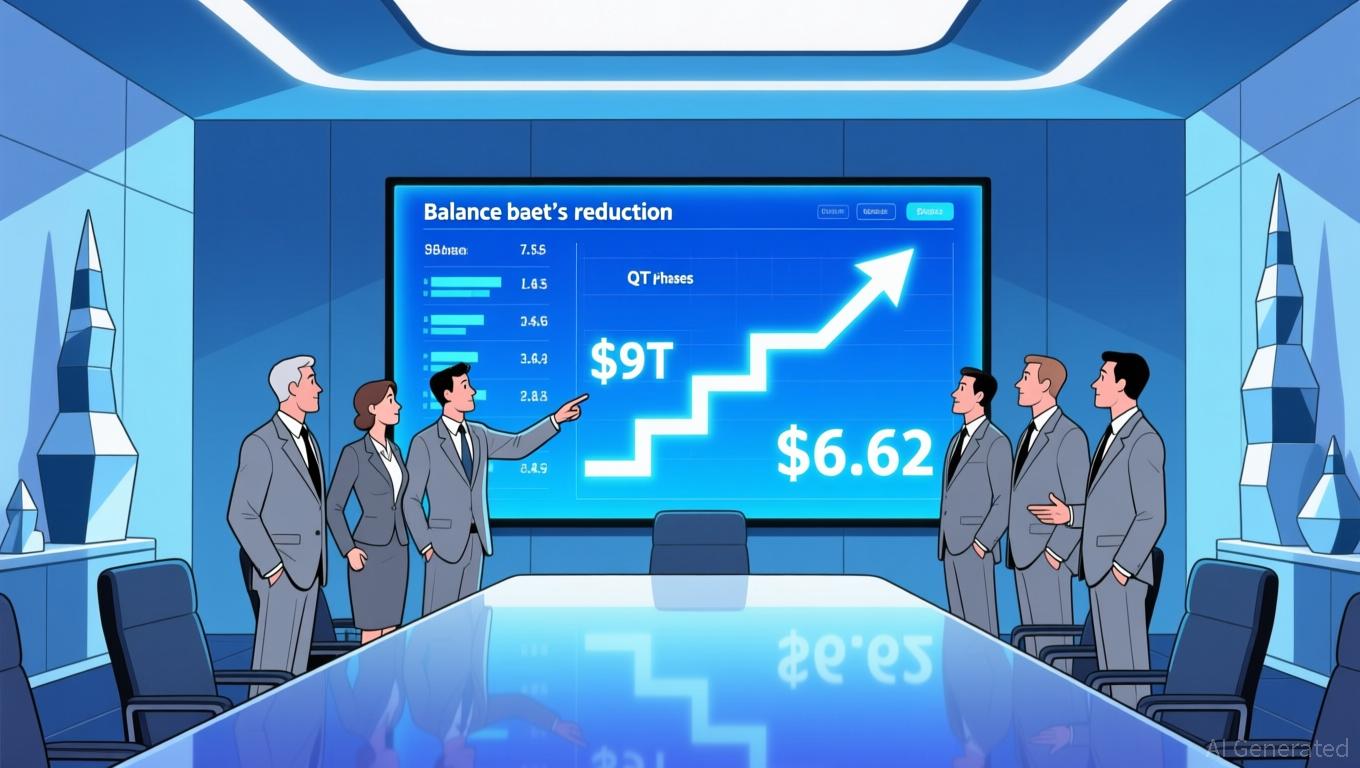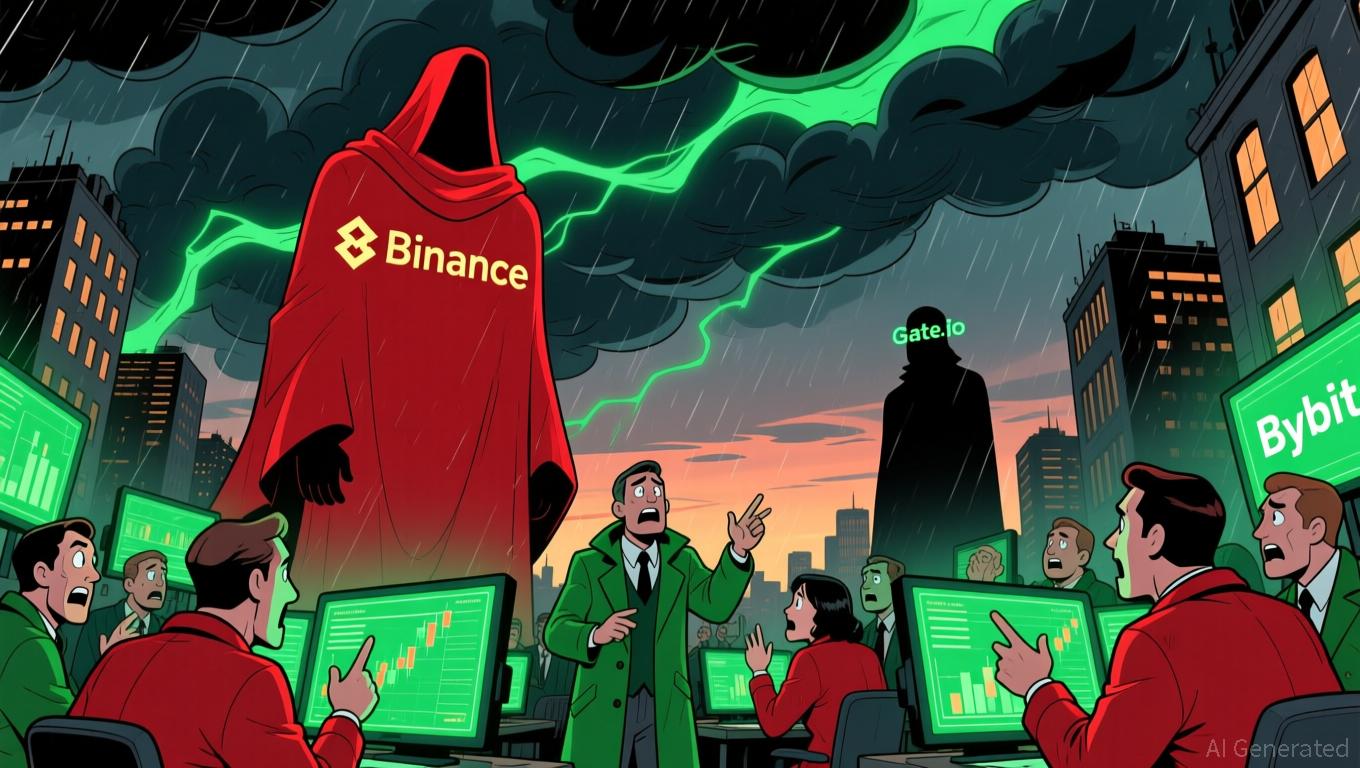Nvidia Posts $57B Record Revenue Pushing Bitcoin Above $91K
Nvidia surprised markets by posting fiscal third-quarter revenue of $57.01 billion, beating Wall Street estimates by almost $2 billion. Meanwhile, Bitcoin rebounded above $91,000 after briefly dipping below $89,000, as analysts attributed much of the crypto market’s decline to growing concerns about a potential AI bubble. Nvidia Smashes Wall Street Targets During Volatility The chip
Nvidia surprised markets by posting fiscal third-quarter revenue of $57.01 billion, beating Wall Street estimates by almost $2 billion.
Meanwhile, Bitcoin rebounded above $91,000 after briefly dipping below $89,000, as analysts attributed much of the crypto market’s decline to growing concerns about a potential AI bubble.
Nvidia Smashes Wall Street Targets During Volatility
The chip giant reported $1.30 earnings per share and revenue of $57.01 billion for its fiscal third quarter, outperforming estimates of $1.26 EPS and $55.2 billion in revenue. Its data center business, which enables AI applications, contributed $51.2 billion—showing a sharp rise from previous periods.
CEO Jensen Huang noted ongoing strong demand for the company’s Blackwell chip architecture and cloud GPUs, reporting that products remain sold out. Nvidia’s forward guidance was also robust, with projected fiscal fourth-quarter revenue of $65 billion—beating analyst forecasts of $62 billion.
CFO Colette Kress pointed to another driver behind the firm’s results: CUDA-powered accelerators are extending hardware lifespans, boosting customer value, and solidifying Nvidia’s competitive edge in AI infrastructure. While the gaming unit drew $4.3 billion in revenue—slightly under expectations—it still delivered solid returns.
Nvidia’s market value recently surpassed $5 trillion, reinforcing its status as the world’s most valuable company. The stock has climbed 37% year-to-date and 25% over the last 12 months. Shares surged 5% following the earnings report, while chipmakers like AMD and Micron also rode the AI wave.
Bitcoin Rebounds as AI Investment Sentiment Returns
Bitcoin recovered on Thursday morning in Asia, jumping above $91,000 after testing lows below $89,000. The quick rebound implies some investors view current prices as entry opportunities despite uncertainty.
Major investors have recently shown caution toward AI stocks. Peter Thiel exited a $100 million stake in Nvidia. SoftBank sold about $5.8 billion in shares. These moves sparked debate over whether AI-driven rallies can last.
Regulators have also flagged risks. The Bank of England warned of systemic threats from widespread AI use in finance. The IMF cited bubble risks in its global stability assessments.
A Bank of America survey found 45% of fund managers see an AI bubble as the most significant market threat. Google CEO Sundar Pichai and JP Morgan’s Daniel Pinto warned of “irrationality”. Klarna’s CEO expressed concern over massive data center investments driven by AI demand.
However, Nvidia’s Q3 results revived AI investment sentiment. Nvidia defended its business model during its earnings call, while the data center’s accounting methods had been questioned. The strong results proved AI demand remains robust despite skepticism. Bitcoin prices also appeared to benefit from the renewed optimism.
Risk Correlations Deepen Across Crypto and Equities
Recent market turmoil has shown an increased correlation between cryptocurrencies and traditional risk assets. Bitcoin’s decline has mirrored declines across major stock indices such as the S&P 500, Nikkei 225, Hang Seng, and Stoxx Europe 600. Crypto-linked stocks are now more often seen as closely tied to the global risk environment.
Gold, usually considered a haven, also fell amid uncertainty. Rising US interest rates and reduced hopes for near-term Federal Reserve rate cuts have pressured both gold and cryptocurrencies. The global crypto market lost over $1 trillion in value over the last six weeks, losing a quarter of its value since October.
Technical outlooks on Bitcoin remain split. Some analysts interpret current trading as re-accumulation—long-term investors buying at lower prices. Others argue that buyer fatigue signals a possible deeper correction ahead.
Nvidia’s robust results offer some reassurance to investors amid concerns about a bubble. However, whether this can restore wider market confidence or prove to be an outlier remains uncertain as investors navigate complex signals around technology valuations and the economic outlook.
Disclaimer: The content of this article solely reflects the author's opinion and does not represent the platform in any capacity. This article is not intended to serve as a reference for making investment decisions.
You may also like
Fed Halts QT, Crypto Balances Hopes for Rate Cuts Amid Regulatory Challenges
- The Fed ended its QT program on December 1, halting balance sheet reductions to support inflation targets and employment goals. - Crypto markets face mixed signals: reduced QT may ease rate pressures but Bitcoin ETFs saw $523M outflows as rate cut odds dimmed. - Clapp Finance launched multi-collateral crypto credit lines to address liquidity needs amid volatile markets and CeFi lending growth. - Bullish reported $18.5M Q3 net income but its stock fell 40% since August, reflecting broader crypto market un

Bitcoin Updates Today: Bitcoin’s Downward Trend Teeters Amid Potential for a Short Squeeze
- Bitcoin perpetual futures show 52.5% short dominance, signaling institutional caution amid mixed exchange positioning. - Binance leads with 52.94% shorts, while Gate.io's 50.45% ratio reflects a more balanced risk appetite across platforms. - Backwardation and $450M ETF outflows highlight market stress, historically preceding 45% average rebounds after capitulation phases. - Short squeeze risks and potential $85k price targets underscore the fragile equilibrium between bearish sentiment and reversal cata

Zerohash Amidst Crypto’s Ultimate Turmoil
- Zerohash faces liquidity and reputational risks amid crypto market turmoil, driven by unconfirmed survey claims and sector-wide volatility. - A $168M liquidation event on GMX highlights systemic risks from high-leverage trading, echoing prior $100M losses by trader James Wynn. - Regulatory uncertainty intensifies with U.S. stablecoin projections, EU MiCAR compliance shifts, and Trump-era pardons complicating compliance frameworks. - Institutional investors pivot to yield-bearing stablecoins (e.g., 15% AP

Brazil Suggests Taxing Stablecoins to Address $30 Billion Shortfall and Meet International Norms
- Brazil plans to tax stablecoin transactions via expanded IOF to align with global standards and recover $30B in lost revenue. - Stablecoin transfers (e.g., USDT) will be reclassified as forex operations under 2025 central bank rules, subjecting them to IOF tax. - The move aligns with OECD's CARF framework, enabling international crypto data sharing and joining global efforts to combat tax evasion. - Political debates persist over crypto tax exemptions, while regulators aim to curb money laundering and in

